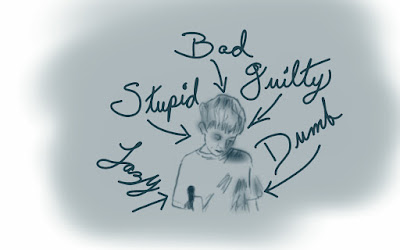Be interested in finding the best way, not in having your own way.
Creative Thinking
One day I was waiting for a meeting and there was a poster in the room. this poster was about “
Creativity”, "
Creative inspiration", "
Creative activities" or "
Creative Activities". The poster showed a room where two strings hang from the ceiling and a person was placed in the middle of the room. The two strings were far enough so one person cannot hold one string and then take the other one without releasing the first one.
The the goal of the exercise was to tie the two strings together.
Many years later I’ve read that this was an experiment created in 1931 by a psychologist from the Michigan University named “Raymond Frederick Maier” (1900 – 1977). In his book “Problem solving and creativity in individuals and groups” [Brooks/Cole Pub. Co., 1970] he describes this scene and gives an analysis of the possible issues.
Problem and Solutions
In the poster that I’ve seen, there were some other elements. For example, some tools are available in the room:
- A chair
- A pair of scissors
- A heavy piece of metal
- A bottle of water
First solutions
In the beginning, the person in the middle of the room could imagine solving the issue by using some "naive" methods:
- Try to stretch his body and make it more “elastic”
- Try some odd postures
- Force his body to extend itself from one string to the other
This is because the person is limiting himself and doesn't take into account his environment. It is evident that the person should use the tools around him. For example:
- Take one string in one hand and try to use the chair as a "hook"
- Take on string in one hand and climb over the chair to try take the other one
In a more elaborated solution, he can think about some extravagant solutions
- Wet the strings in order to change their elasticity
- Hang the heavy metal piece from the string in order to elongate it and then repeat the process with the second string
These kind of solutions clearly show that the person is limiting himself by some restrictions that hasn't been mentioned and which may not even exist.
Breaking the rules!
In order to give an issue to some impossible problems,
some rules shall be respected while some others can be broken. if no special restrictions have been give, it is a good idea to try to break all of them. Thus, the person in the room could try to simply cut one of the ropes off.
Imaginative solution
Of course, with some more imagination, the person could use a medium-weight object hang from one of the strings in order to swing it while taking the other and using the chair to gain some distance.
Ask an Expert
In a previous post named “
The gap between Customer's explanation and his real needs” I've shown a very funny video clearly schematizing how Customer's requirements are often unclear, contradictory, fuzzy and even crazy or impossible to implement.
At the end of the video, the Expert accepts the project, mostly because “he is an expert” and that’s what everybody expects from an Expert.
But, in the real life,
how an expert could have answered to these questions?
Lets take this video as example!
He was asked to draw seven lines, all of them strictly perpendicular between them. What limits him to do it? Geometry! This is because he is thinking about linear Euclidean geometry, but nobody enunciated this requirement's limitation. Thus we can think about breaking this rule. We can easily draw two perpendicular lines in a bi-dimensional space. We can also easily imagine three perpendicular lines in a three-dimensional space. So, let’s say to the customer that the lines will be drawn in a seven-dimensional space but only three of them will be visible!
The expert was also asked to draw the Red lines with Green ink. No more limitations were given. So let’s say to the customer that the lines will be drawn in green ink, but the user will need to use some special “chromatic glasses” converting green colors into red colors.
Fresh eyes
The point is not to be limited by imaginary constraints. Instead of that, to take a look to the problem with fresh eyes.
What distinguishes an expert?
A Free Mind and a tendency to Break Some Rules!
Do you think that anyone can be an Expert?
Do you know other expert's skills that should be mentioned?
Extra reading:
* “
The gap between Customer's explanation and his real needs”
*
http://cybersavoir.csdm.qc.ca/peremarquette/2012/03/15/tout-lmonde-a-son-gps/ (in French)
*
http://en.wikipedia.org/wiki/Norman_Maier
Bibliographic information

Title: Problem solving and creativity in individuals and groups
Author:
Norman Raymond Frederick Maier
Publisher: Brooks/Cole Pub. Co., 1970
Original from the University of Michigan
Digitized 30 Sep 2008
Length: 493 pages




























